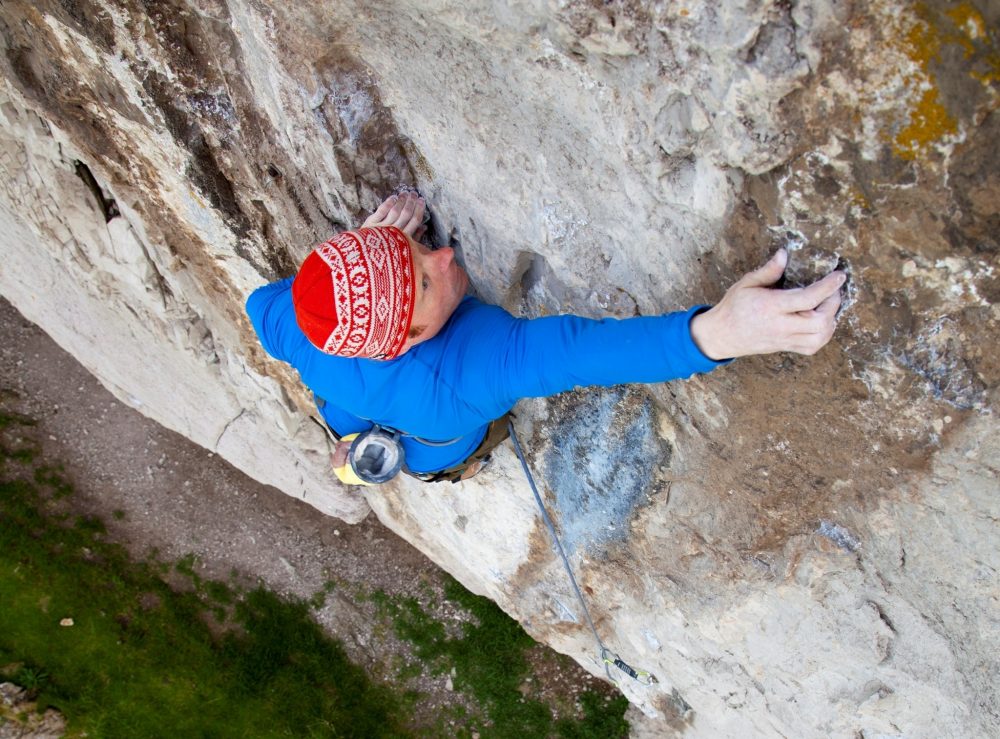On-sighting - Tips and Techniques
Verb - To climb a route that you’ve not climbed before, leading it from bottom to top without resting or falling off and placing your own quickdraws as you climb.

My thoughts on maximising your efforts when 'on-sighting' a route.
Apart from having your head in the right place and a familiarity with the rock you’re climbing on, the most important part of climbing a route high in your on-sight grade is warming up.
If you’re top on-sight grade is 6b+ then you need to start on-sighting a route graded 5+, then work steadily through the grades - 6a, 6a+ and then 6b - to get both warmed up and also to get your head in the right place. Some people need to get a fairly good pump on before their fully warmed up. If you struggle on 6b then it’s a gauge of how you’re going on that particular day. Have plenty of rest between each route, take your time and don’t leave your main objective till the Friday when you’re heading home from a week’s holiday on the Saturday and have been cranking out the routes all week! Spend a couple of days warming up and getting a feel for the rock & then 'send-it' mid-week.
On a couple of the routes during the warm up, climb them again to a section where the ground is steep enough to fall off and just let go! (Easier said than done!). This really helps get your head around the fact that firstly it’s ok to fall off and you won’t hurt yourself and secondly it gives you more confidence in the belayer and the knowledge that they can comfortably hold you if you were to fall.
This means that when you go for your on-sight, all you should be thinking about is making the moves, clipping and getting to the top. You need to be totally focused on the route and not looking down on a difficult move and worrying about falling off - you need to bring your complete mental focus down to that small area of rock in front of you at that moment in time, and make the moves without holding on too tightly.
Remember to be Dynamic in your belaying - and that doesn’t mean have lots of rope out. Give your mate enough rope to clip and then take the excess back in, giving them just enough to make the moves without pulling on the rope. The job of the belayer is to focus (which can be really hard to do at a busy crag or indoor wall!) and try to anticipate their moves, giving them rope when they need it.
No, dynamic belaying is to lock off the belay plate when the person falls and allow yourself to make a few steps forward toward the wall, allowing the climber to come to a gradual stop. Don’t just lock the belay plate off, stand still and lean back. This just stops the fall too suddenly which generally means they’ll swing hard into the wall. By locking off and stepping forward, being dynamic in your belaying even on a vertical wall the climber doesn’t smack into the boards, but has a much softer landing.
Note, the belayer needs to have a clean area in front of them to be able to move forward and be dynamic, so don’t have your rope flaked out in front of the belayer have it to the side. When climbing outside, look for a flat area with no boulders to fall over or trip on when you do step forwards to hold a fall.
It is something you need to practice and it's amazing how much more confidence it gives the climber having fallen and held in this way.
On-sighting feels a very pure way to climb a route and climbing on bolts allows you to push the grade a little, more so than more traditional ('adventure') climbing where you place your own protection in the form of wires & cams.
You can use different evenings at the local climbing wall to try this process of on-sighting & see how you go.
Go on, you might surprise yourself!
Enjoy
Adrian Nelhams
Related News Articles

ISM Virgin Peaks Expedition 2024 - Tien Shan Kyrgyzstan
ISM trip report of our trip into a very remote part of the Tien Shan Mountains, Kyrgyzstan
Read Article
Getting Into & Developing Your Climbing
Indoor bouldering is a great place to start if you want to try climbing for the first time. You can…
Read Article
ISM Virgin Peaks Expedition 2023 – Tien Shan Kyrgyzstan
ISM trip report of our trip into a very remote part of the Tien Shan Mountains, Kyrgyzstan.
Read Article
Kyrgyzstan Faces 2022
This year ISM celebrated 25yrs of expedition climbing in Kyrgyzstan, with a fantastic trip to the Fergana Range in the…
Read Article



